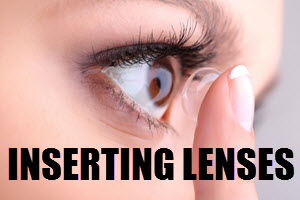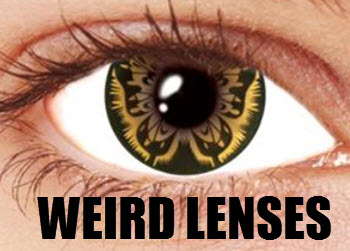Understanding Bold and Bright Decorative Lenses
Decorative lenses, known variably as cosmetic, fashion, or novelty lenses, are specifically designed contacts that focus on aesthetic changes rather than vision correction. These lenses incorporate vibrant colors, intricate designs, and unique patterns, making them a popular choice for individuals looking to make a bold visual statement or complete a specific look for an event.
Types of Decorative Lenses
When selecting decorative lenses, there are several options available, each offering different levels of impact and stylistic effects.
Colored Lenses
Colored lenses predominantly aim to modify or enhance the natural eye color. Their transformative abilities range from subtle tints that complement the natural iris hue to more dramatic changes that present as entirely new colors. These lenses can offer single-tone shades that provide a more natural appearance, or multiple tones that blend together, adding greater depth and a more nuanced look. This category allows for experimentation with eye color and can be a perfect match for various fashion statements or personal styles.
Patterned Lenses
Patterned lenses elevate decorative contacts from simple color changes to intricate designs, making them highly sought for special occasions like themed parties or costume events. These lenses can sport a vast array of patterns, from stars and cat eyes to eccentric spiral motifs, providing extensive customization options. Patterned lenses not only alter the eye color but can also transform the shape or even give the illusion of texture on the iris, making them a favorite in creative circles.
Special Effect Lenses
For the most dramatic transformation, special effect lenses are unmatched in their ability to create extraordinary visual alterations. Frequently used in cinema, theater, and during Halloween, these lenses can give the wearer a non-human or fantastical appearance. Some designs cover part of the sclera, the white portion of the eye, for a striking look. Others might be reactive to UV light, glowing dramatically under blacklight or specialized lighting conditions. This variety caters to those seeking attention-grabbing styles or aiming to embody a character.
Safety Considerations
Before diving into the world of decorative lenses, ensuring that the eyes’ health is a prime focus is fundamental. The safety of these lenses primarily hinges on the source of acquisition, and professionals recommend securing a prescription regardless of whether a corrective factor is needed.
Proper Fit and Prescription
Across the board, experts in eye care underscore the importance of properly fitted contact lenses. Even decorative lenses, which are primarily for cosmetic purposes, necessitate a proper fit to prevent potential eye damage. An eye examination provides assurance that the lenses fit safely and do not compromise the health of the eyes. This professional guidance also aids in selecting the correct size and curvature of the lenses, ensuring comfort during wear.
Acquiring Lenses Legally
Legally, in many jurisdictions, selling decorative lenses without a prescription is prohibited, underscoring the importance of safe acquisition channels. The FDA’s recommendation reinforces acquiring these lenses via a qualified eye care provider. This guidance helps ensure that the lenses adhere to safety standards and are manufactured according to health regulations, thereby protecting users from potential substandard products that could harm eye health.
Pros and Cons
While the allure of decorative lenses lies in their ability to enhance personal expression and add flair to one’s look, they come with responsibilities, particularly regarding hygiene and care. There are guidelines that users must adhere to, including cleaning routines and proper wear durations, to maintain healthy eyes.
The benefits of decorative lenses are vast—they provide a platform for creative expression, can complement or enhance costumes, and serve as conversation pieces. Well-maintained lenses can transform an outfit or a character portrayal, contributing significantly to the overall aesthetic experience.
Conversely, the drawbacks largely stem from improper use or handling. There’s a risk of eye infections or damage if the lenses are used beyond their prescribed duration or if users maintain inadequate hygiene standards. Users must remain vigilant about these aspects to enjoy the benefits of decorative lenses without compromising their eye health.
Conclusion
In summary, bold and bright decorative lenses offer an exciting avenue for those eager to experiment with their personal style and engage in creative expression. They have found a niche in fashion, performance arts, and social gatherings. However, like all products involving health, they necessitate cautious usage guidelines. By consulting eye care professionals and ensuring the purchase of lenses from legitimate, authorized sources, users can protect their ocular health while enjoying the artistic possibilities these lenses offer. The key to a fulfilling and safe experience with decorative lenses lies in balancing aesthetic ambitions with responsible eye care practices.



 Cosmetic contact lenses
Cosmetic contact lenses